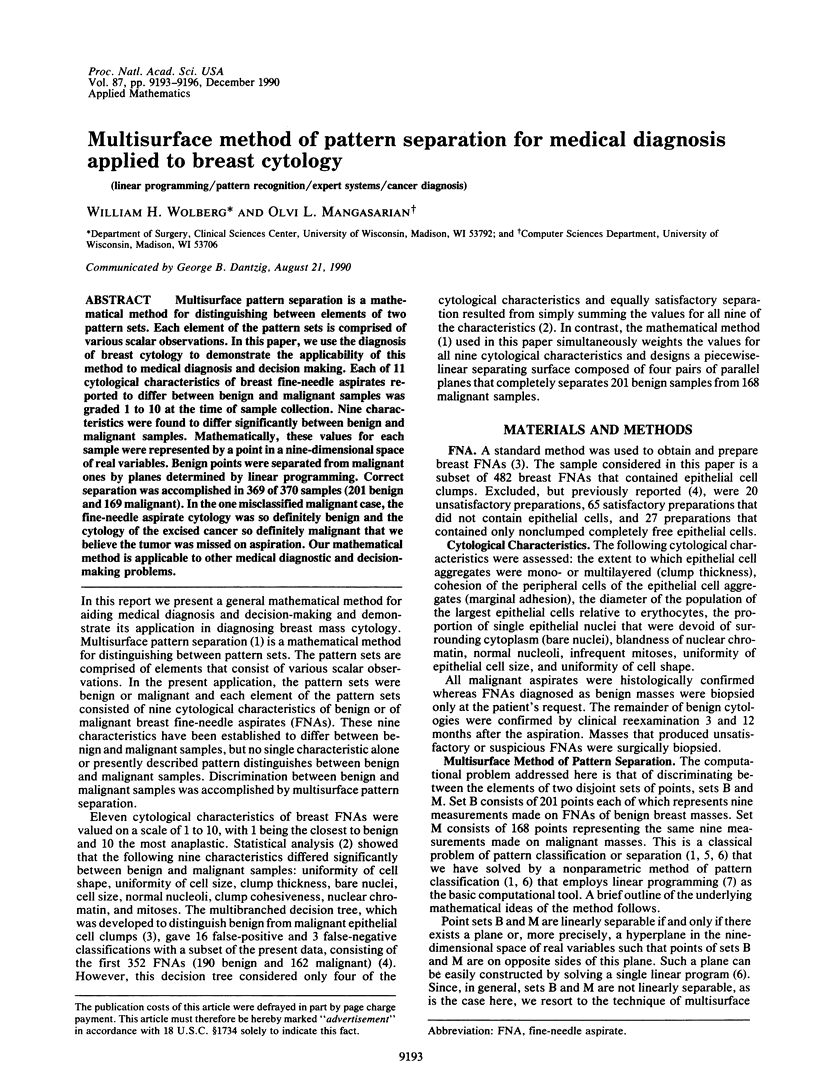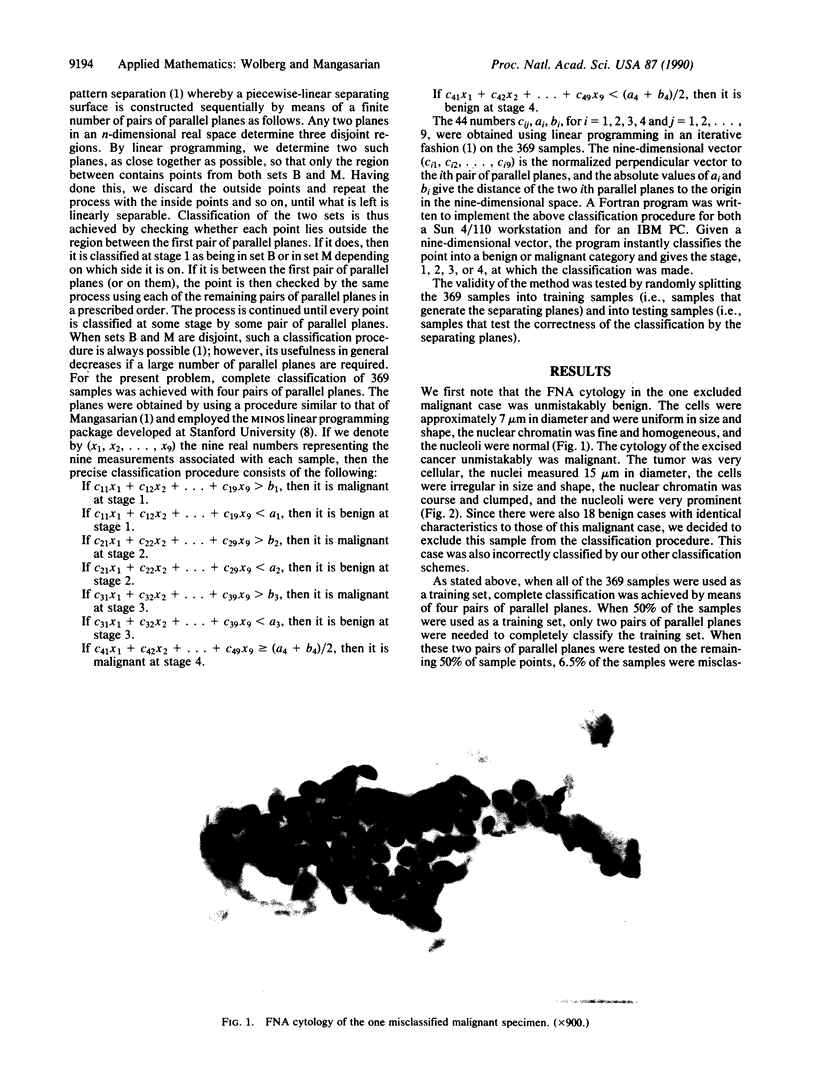Abstract
Multisurface pattern separation is a mathematical method for distinguishing between elements of two pattern sets. Each element of the pattern sets is comprised of various scalar observations. In this paper, we use the diagnosis of breast cytology to demonstrate the applicability of this method to medical diagnosis and decision making. Each of 11 cytological characteristics of breast fine-needle aspirates reported to differ between benign and malignant samples was graded 1 to 10 at the time of sample collection. Nine characteristics were found to differ significantly between benign and malignant samples. Mathematically, these values for each sample were represented by a point in a nine-dimensional space of real variables. Benign points were separated from malignant ones by planes determined by linear programming. Correct separation was accomplished in 369 of 370 samples (201 benign and 169 malignant). In the one misclassified malignant case, the fine-needle aspirate cytology was so definitely benign and the cytology of the excised cancer so definitely malignant that we believe the tumor was missed on aspiration. Our mathematical method is applicable to other medical diagnostic and decision-making problems.
Full text
PDF



Images in this article
Selected References
These references are in PubMed. This may not be the complete list of references from this article.
- Wolberg W. H., Tanner M. A., Loh W. Y. Diagnostic schemes for fine needle aspirates of breast masses. Anal Quant Cytol Histol. 1988 Jun;10(3):225–228. [PubMed] [Google Scholar]
- Wolberg W. H., Tanner M. A., Loh W. Y. Fine-needle aspiration for breast mass diagnosis. Arch Surg. 1989 Jul;124(7):814–818. doi: 10.1001/archsurg.1989.01410070068014. [DOI] [PubMed] [Google Scholar]
- Wolberg W. H., Tanner M. A., Loh W. Y., Vanichsetakul N. Statistical approach to fine needle aspiration diagnosis of breast masses. Acta Cytol. 1987 Nov-Dec;31(6):737–741. [PubMed] [Google Scholar]




